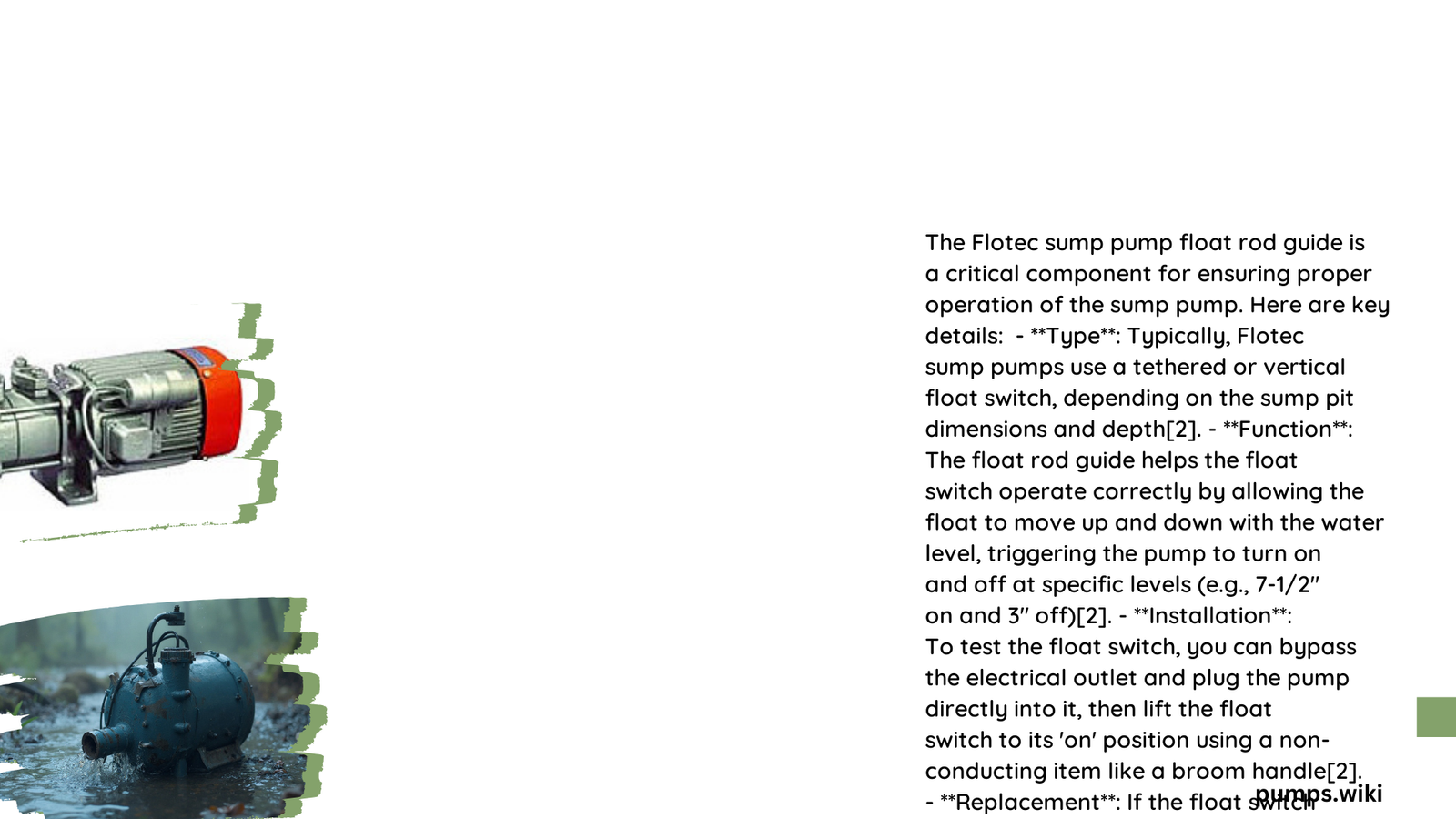The Flotec sump pump float rod is a critical component that controls water level activation and deactivation in basement drainage systems. This comprehensive guide provides homeowners and professionals with detailed insights into float rod specifications, installation techniques, maintenance strategies, and troubleshooting methods, ensuring reliable water management and preventing potential basement flooding scenarios.
What Makes the Flotec Sump Pump Float Rod Essential?
Understanding Float Rod Fundamentals
Float rods are precision-engineered mechanical switches that automatically control sump pump operations based on water levels. For Flotec models, these components determine when the pump activates and deactivates, protecting your property from water damage.
Key Float Rod Characteristics
| Feature | Description | Typical Specification |
|---|---|---|
| Material | Corrosion-resistant | Plastic/Metal Composite |
| Activation Range | Vertical Switch Levels | 3-7.5 inches |
| Compatibility | Specific Pump Models | E50VLT, E75VLT |
How Do Float Rods Function?
The float rod operates through a simple yet effective mechanism:
- Water Level Detection
- Rises with increasing water
- Triggers pump activation at predetermined height
-
Prevents basement flooding
-
Automatic Shutdown
- Drops as water level decreases
- Deactivates pump when water reaches minimum threshold
- Prevents unnecessary motor strain
What Are the Critical Installation Steps?

Preparing for Float Rod Installation
Before installation, gather these essential tools:
– Channel locks
– Screwdriver
– Measuring tape
– Hacksaw (optional)
Installation Procedure
- Positioning the Sump Pump
- Center pump in sump pit
- Ensure stable placement
-
Verify minimum 10-inch pit diameter
-
Float Rod Alignment
- Match rod with vertical pump switch
- Secure using mounting strap
- Maintain 1-2 inch clearance from pit walls
What Are Common Float Rod Challenges?
Potential Installation Issues
- Misalignment: Causes premature wear
- Obstruction: Prevents proper movement
- Incorrect Height Setting: Leads to inefficient pumping
How Can You Maintain Your Float Rod?
Replacement and Maintenance Strategies
Signs Indicating Float Rod Replacement
- Inconsistent pump activation
- Visible physical damage
- Age exceeding 5-7 years
Replacement Cost Considerations
- Average replacement cost: $10-$50
- Professional installation: $100-$250
- Recommended frequency: Every 5-7 years
What Should You Know About Compatibility?
Selecting the Right Float Rod
- Verify exact model specifications
- Check manufacturer recommendations
- Avoid universal replacements when possible
Expert Troubleshooting Tips
Diagnostic Techniques
- Visual Inspection
- Check for corrosion
- Examine mounting hardware
-
Verify smooth rod movement
-
Performance Testing
- Simulate water level changes
- Monitor pump response
- Measure activation/deactivation intervals
Final Recommendations
Proper float rod maintenance ensures:
– Reliable water management
– Extended sump pump lifespan
– Reduced risk of basement flooding
Professional Advice
- Annual professional inspection
- Regular DIY maintenance checks
- Keep detailed maintenance records
Conclusion
Understanding your Flotec sump pump float rod empowers homeowners to prevent water damage and maintain efficient drainage systems.
